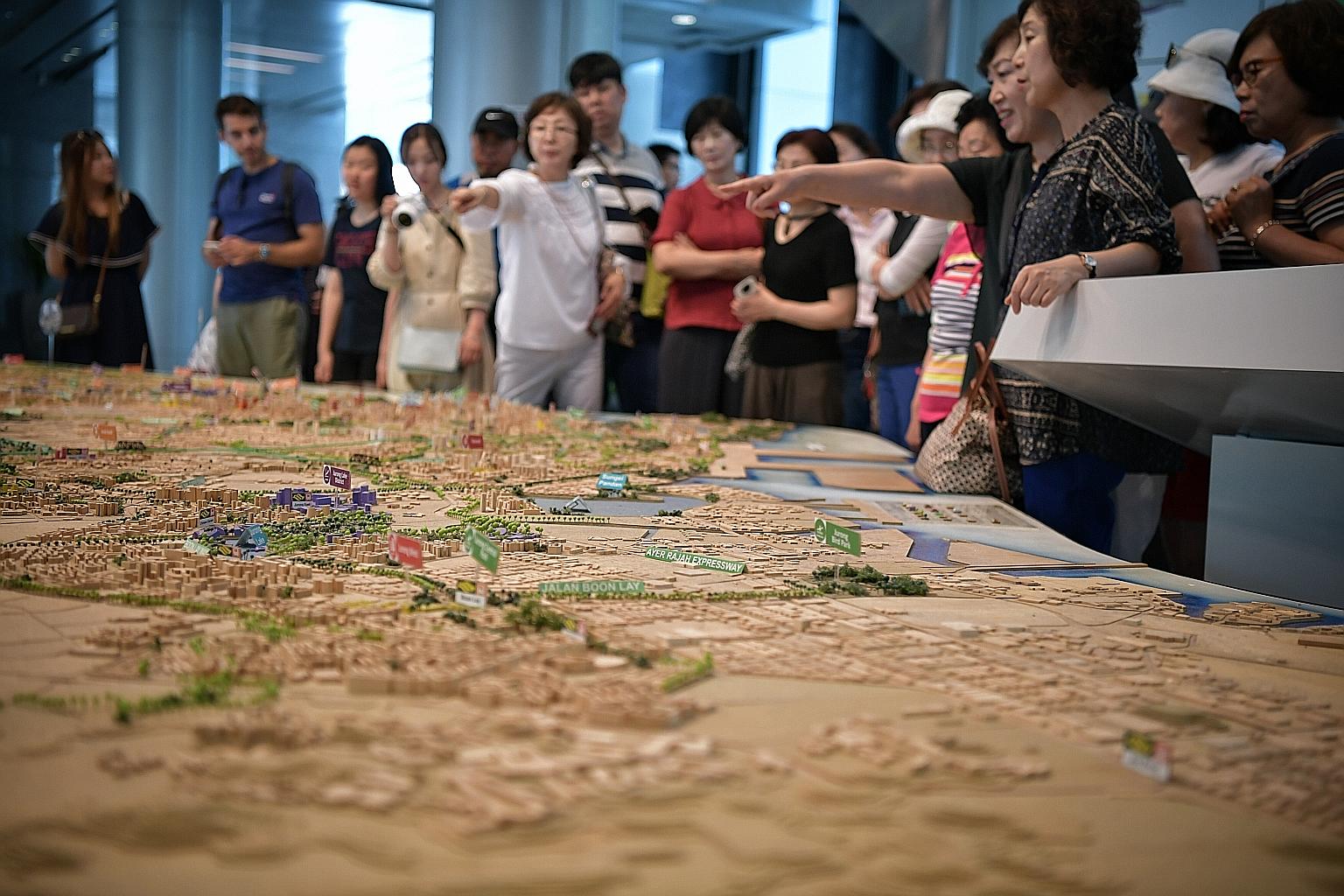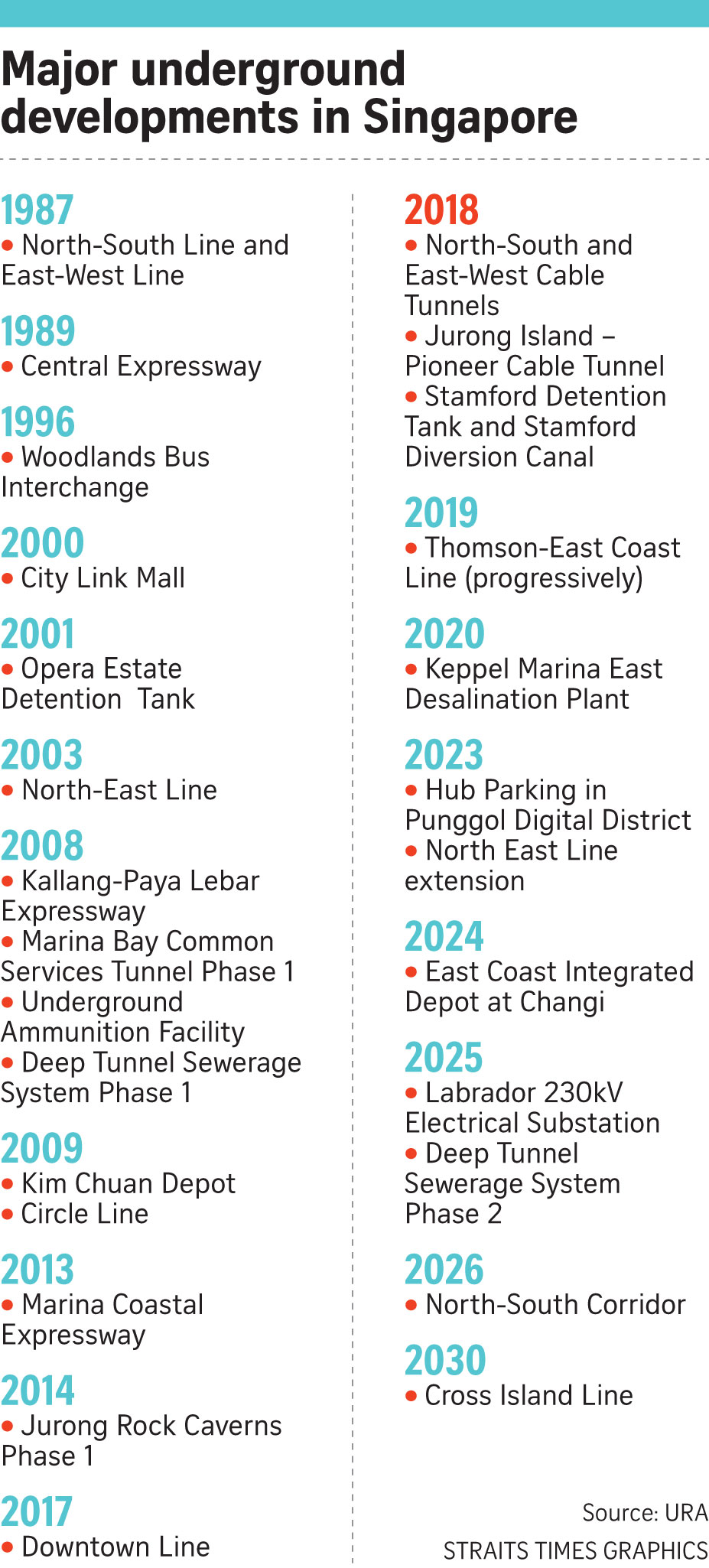Singapore digs underground to free up land on surface
Space below to host more utilities, including nation's largest electrical substation
Sign up now: Get ST's newsletters delivered to your inbox

Visitors at the Underground: Singapore's Next Frontier exhibition yesterday. National Development Minister Lawrence Wong, who was at the opening of the exhibition, detailed plans for subterranean development, including that for the new 230kV station at the former Pasir Panjang Power District.
ST PHOTO: KUA CHEE SIONG
Derek Wong
Follow topic:
A new electrical substation which could produce enough electricity to supply the Labrador area is being planned.
But residents will not see it as it will be built underground - forming part of a nationwide push to use more subterranean space in land-scarce Singapore.
The 230kV station will be located in the former Pasir Panjang Power District, below a new commercial building, and is scheduled to be ready by 2025.
Built by power company SP Group, it will be Singapore's largest underground substation and will free up about 3ha of land at the site - equal to about four football fields.
Details were revealed by Minister for National Development Lawrence Wong yesterday at the opening of an exhibition on underground spaces.
No details on the project's cost were given.
There are several underground 66kV substations already operating in Singapore. These are alongside efforts to make better use of Singapore's underground space.
Two projects underground - the Jurong Rock Caverns and an ammunition facility - have saved Singapore 360ha of land, about the size of Marina Bay, said Mr Wong.

Also revealed at the launch were results from an underground benchmark study of 10 cities, such as Helsinki and London. The two-year effort was commissioned by the Urban Redevelopment Authority (URA) to examine international best practices in underground space management.
The study's project manager, Mr Peter Stones from engineering consultancy Arup, said it reinforces the need for holistic planning when it comes to the use of underground spaces.
Mr Wong also announced that the Singapore Land Authority will collate underground data on its Integrated Land Information Service (Inlis) online later this year.
This will allow industry players, such as construction companies, to purchase utility plans. Currently these have to be purchased from the different utility providers.
If utilities are overlooked, it can lead to blackouts and burst pipelines during construction.
Meanwhile, while detailing other plans for subterranean development, Mr Wong said the Government had no intention of putting residential homes underground.
"Instead, our priority is to locate supporting infrastructure underground," he noted.
Mr Chong Kee Sen, former president of the Institution of Engineers, said: "By putting utilities underground, we free up ground spaces, which can be used for parks and social amenities."
He cited the soft, undulating soil in Singapore as a possible challenge, but believes the engineers here can deal with it.
Next year, a 3D underground masterplan by URA will unveil pilot areas and their potential uses.
Admission to Underground: Singapore's Next Frontier exhibition at the URA Centre atrium is free. It is open until June 29.

